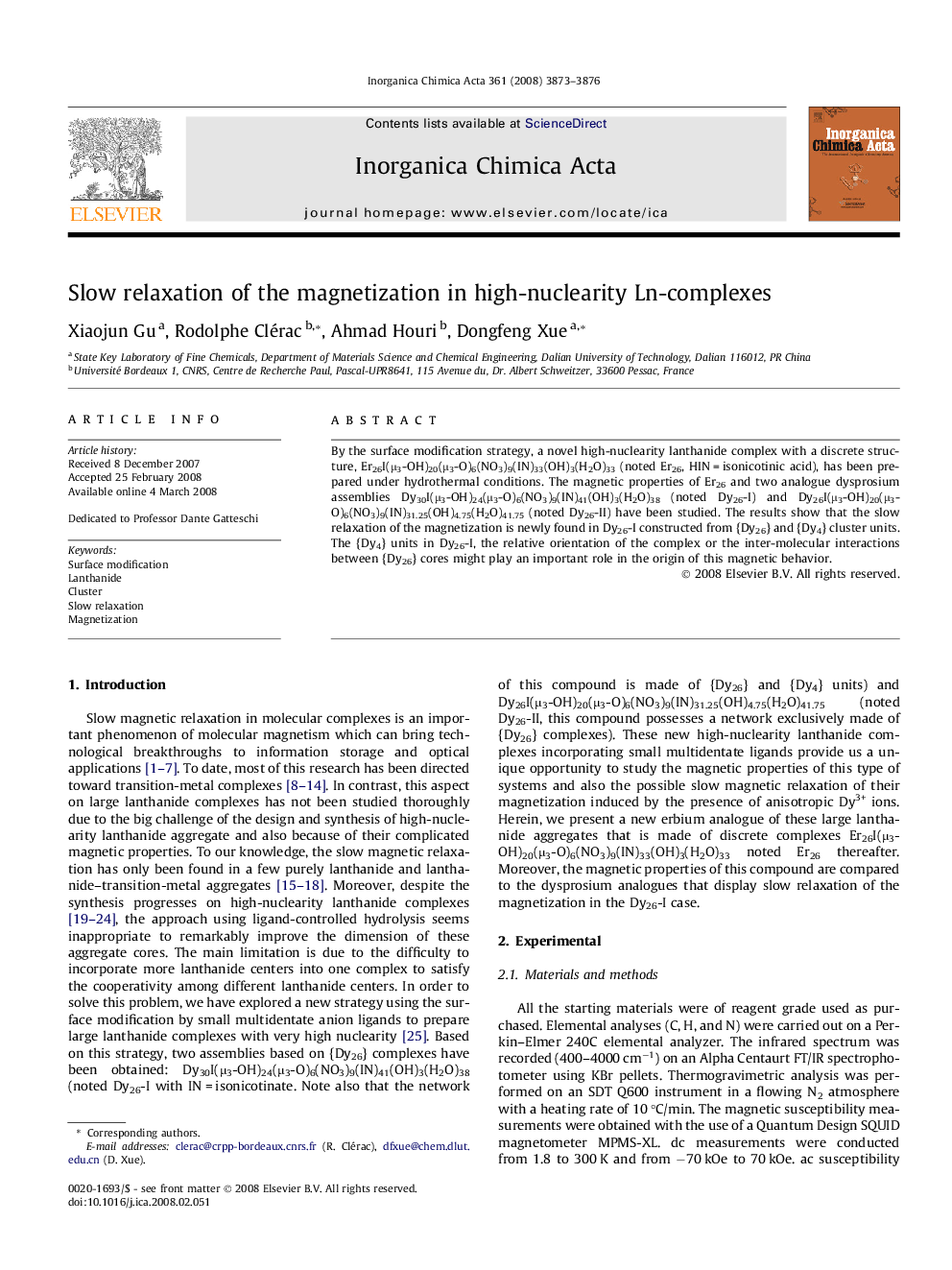| Article ID | Journal | Published Year | Pages | File Type |
|---|---|---|---|---|
| 1311455 | Inorganica Chimica Acta | 2008 | 4 Pages |
By the surface modification strategy, a novel high-nuclearity lanthanide complex with a discrete structure, Er26I(μ3-OH)20(μ3-O)6(NO3)9(IN)33(OH)3(H2O)33 (noted Er26, HIN = isonicotinic acid), has been prepared under hydrothermal conditions. The magnetic properties of Er26 and two analogue dysprosium assemblies Dy30I(μ3-OH)24(μ3-O)6(NO3)9(IN)41(OH)3(H2O)38 (noted Dy26-I) and Dy26I(μ3-OH)20(μ3-O)6(NO3)9(IN)31.25(OH)4.75(H2O)41.75 (noted Dy26-II) have been studied. The results show that the slow relaxation of the magnetization is newly found in Dy26-I constructed from {Dy26} and {Dy4} cluster units. The {Dy4} units in Dy26-I, the relative orientation of the complex or the inter-molecular interactions between {Dy26} cores might play an important role in the origin of this magnetic behavior.
Graphical abstractThe surface modification strategy has been carried out to successfully synthesize a discrete Er26 complex, and the magnetic properties of the present complex and the analogue dysprosium assemblies have been studied. The slow relaxation of the magnetization was newly found in a high-nuclearity dysprosium system constructed from {Dy26} and {Dy4} cluster units, which demonstrates that the synthesis of materials based on high-nuclearity Ln-complexes can lead to interesting magnetic properties.Figure optionsDownload full-size imageDownload as PowerPoint slide
